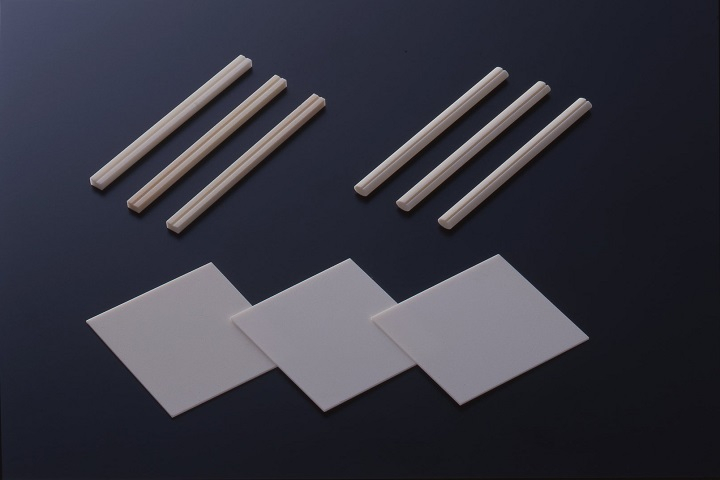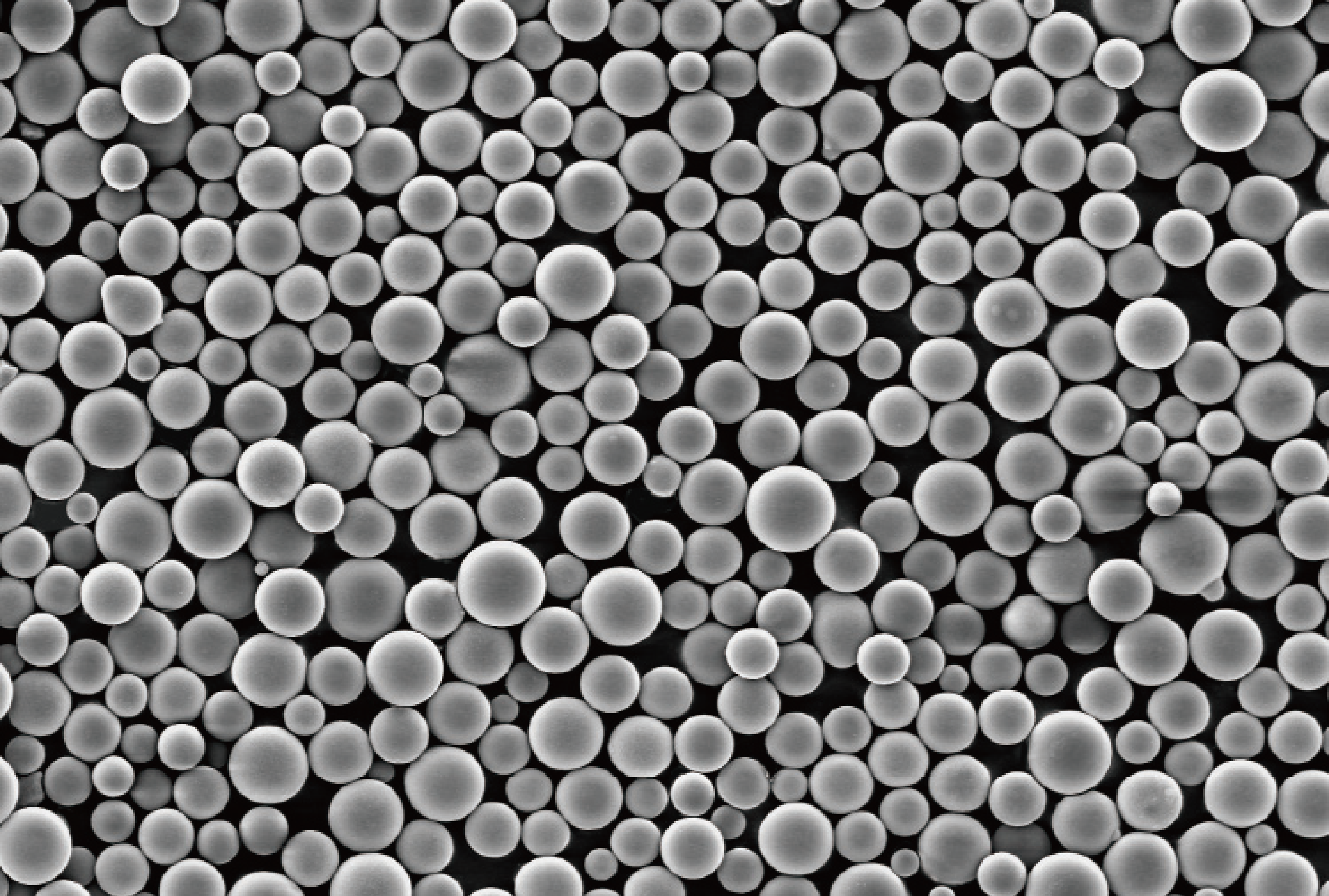Development of Glass with Wide Range of Coefficients of Thermal Expansion
Thermal expansion in materials refers to the phenomenon where the increased atomic thermal vibrations cause the atoms to move further apart, leading to changes in the material's length and volume as temperature rises. The coefficient of thermal expansion (CTE) is a key indicator of this phenomenon, representing the rate of dimensional change per degree Celsius of temperature variation. This property is one of the most important characteristics of glass.
By adjusting the glass composition, its CTE can be tailored to meet specific application requirements. For instance, lowering the CTE can enhance the thermal shock resistance of the glass. In manufacturing processes, such as heat treatment, the CTE can significantly impact the final product's yield.
Our glass is also frequently used as a composite material, fused at high temperatures with metals or other materials. In these cases, it is crucial that the thermal expansion properties of both materials are well-matched. Therefore, managing the CTE in relation to the processing temperature range and other materials being fused is critically important.
Contents
- Glass with Coefficients of Thermal Expansion Optimized for Semiconductor Package Manufacturing Processes
- Glass with Controlled Coefficients of Thermal Expansion for Composite Applications
- Sidebar: Glass-ceramics
- Low Thermal Expansion Glass (Thermal Expansion Control through Crystal Precipitation)
- ZERØ™: Ultimate Zero Coefficient of Thermal Expansion
- Negative Thermal Expansion Materials
Glass with Coefficients of Thermal Expansion Optimized for Semiconductor Package Manufacturing Processes
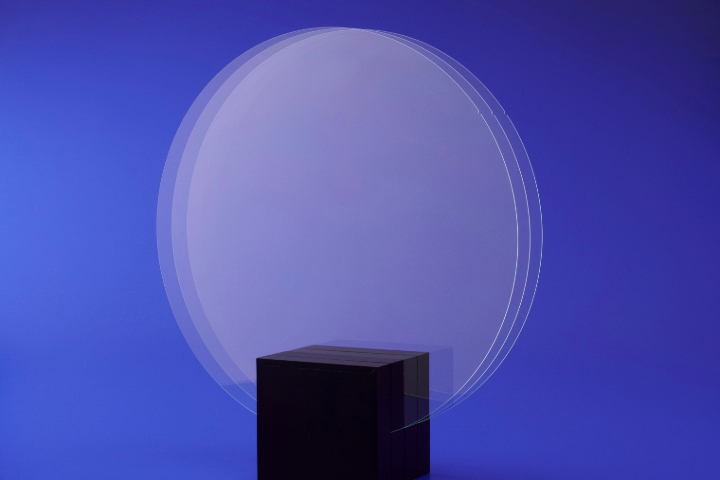
Glass is widely used as a carrier substrate to support components like chips in semiconductor packaging processes, thanks to its excellent properties. Semiconductor packages combine materials with different coefficients of thermal expansion, such as silicon and resin, with the carrier substrate bonded to the package. During heat treatment, differences in coefficients of thermal expansion of these materials can lead to warping, which can significantly impact the yield of the final product.
Carrier glass with tailored coefficients of thermal expansion is crucial, as the required coefficient depends on the specific combination of materials and process conditions in each semiconductor package.
By precisely controlling the coefficients of thermal expansion, we provide customized carrier substrates (Glass Wafer for Supporting Semiconductors) that meet the specific needs of our customers' manufacturing processes.
Glass with Controlled Coefficients of Thermal Expansion for Composite Applications
Our glass is frequently used in composite applications, where it is bonded with materials such as metals or ceramics at high temperatures. Differences in the thermal expansion properties of these materials can cause defects like cracking or delamination after bonding. To address this, our glass products are designed with controlled thermal expansion properties, reducing material mismatch, minimizing residual stress during sealing, and preventing damage.
-
High Infrared-Absorbing Glass Tubes for reed switch (STI, SRI): 52Ni-Fe alloy or Co-Fe alloy
-
UV-C High-transmitting Glass Tubes (BU-41) : Kovar
metal -
UV-C LED Lids with Sealant: Aluminum Nitride
Additionally, our powder glass products, commonly used for coating various substrates and components, are engineered to achieve specific coefficients of thermal expansion. This is accomplished by carefully controlling the combinations and blending ratios of glass and ceramic powders, ensuring optimal performance for each application.
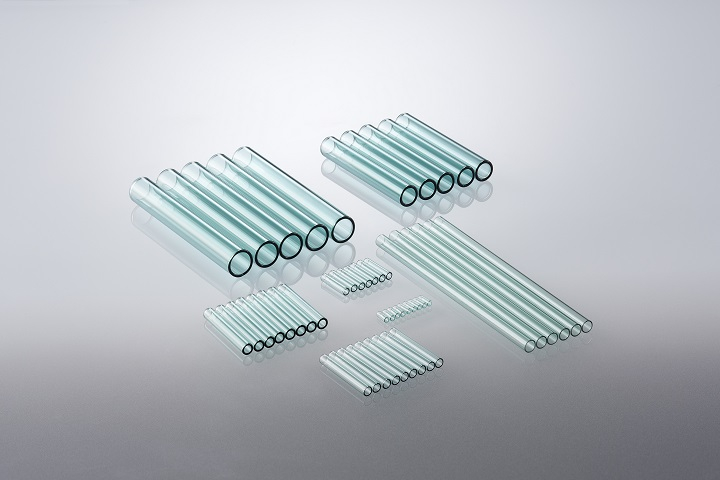
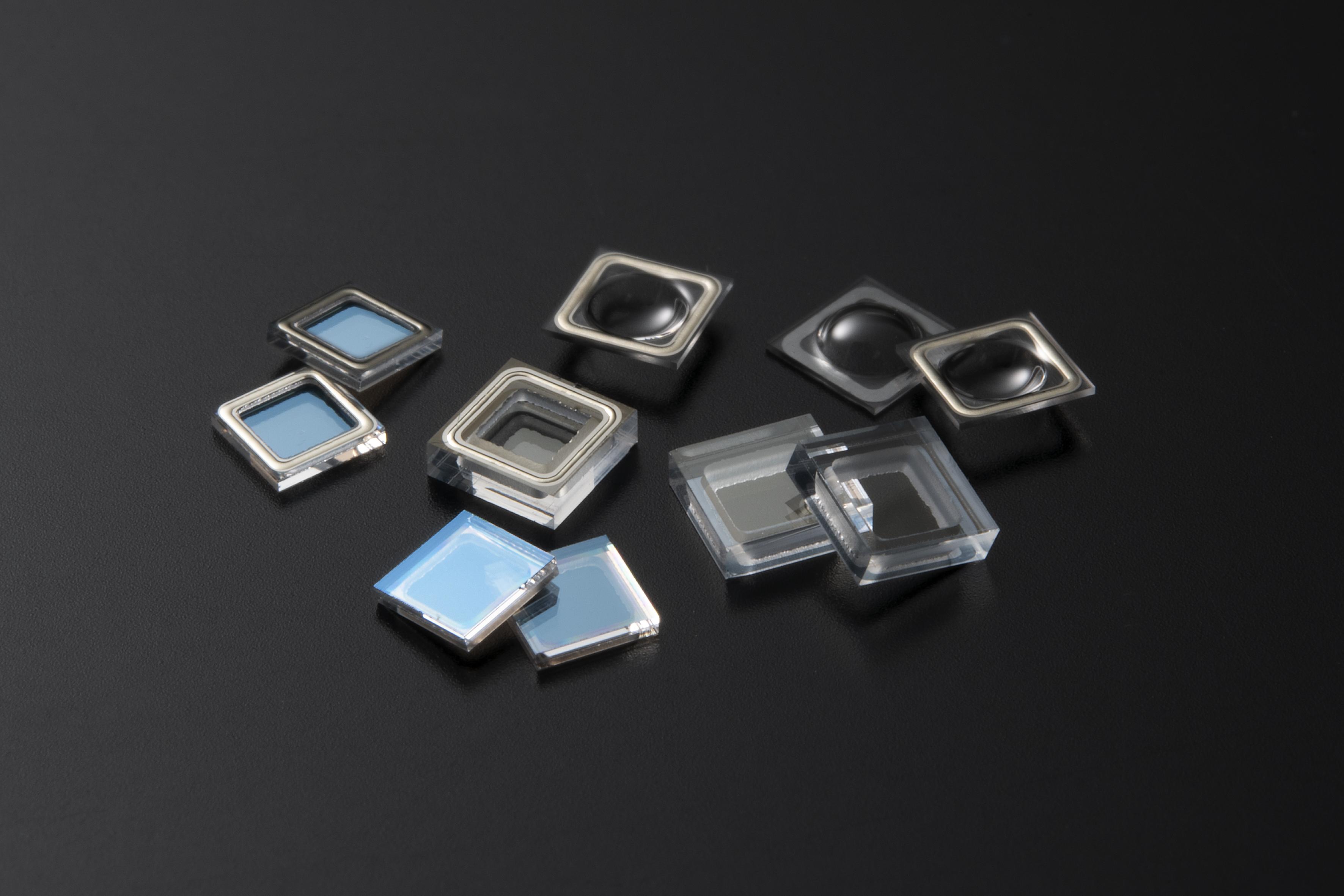
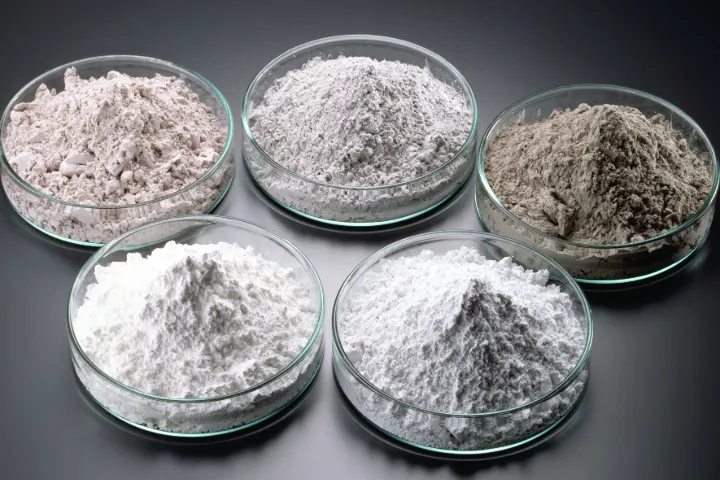
Sidebar: Glass-ceramics
Glass-ceramics are materials formed by heat-treating glass with a specialized composition to promote the uniform precipitation of desired crystals within the glass. By carefully controlling the type, amount, and size of the crystals, along with the properties of the remaining glass, we can achieve properties not possible with ordinary glass, such as enhanced heat resistance, thermal shock resistance, and increased strength.
Our Super Heat-Resistant Glass-Ceramics: Neoceram (N-0), features crystals of β-quartz solid solution precipitated within the glass. This β-quartz solid solution has negative thermal expansion properties, meaning it contracts as temperature increases. When combined with the positive thermal expansion of the residual glass, this negative expansion effectively cancels out volume changes caused by temperature changes, resulting in a near-zero coefficient of thermal expansion.
The crystals of β-quartz solid solution in Neoceram (N-0) are about 30nm in size, much smaller than the wavelength of visible light (380–780nm). Additionally, the refractive index difference between the crystals and the residual glass is minimal, giving N-0 excellent transparency. A 4mm-thick plate of N-0 has a visible light transmittance of 87%, similar to ordinary window glass.
N-0 shows remarkable heat resistance, allowing it to be used continuously at temperatures up to 700°C. It shows exceptional thermal shock resistance, withstanding direct exposure to cold water even when heated to 800°C without cracking.
Super Heat-Resistant Glass-Ceramics: Neoceram (N-11) is a variant of N-0, produced by heat-treating the glass at a different temperature. This process precipitates crystals of β-spodumene solid solution with a size of approximately 1μm. While the larger size of crystals make N-11 appear opaque and white, it offers enhanced heat resistance compared to N-0, withstanding continuous use at temperatures up to 850°C.
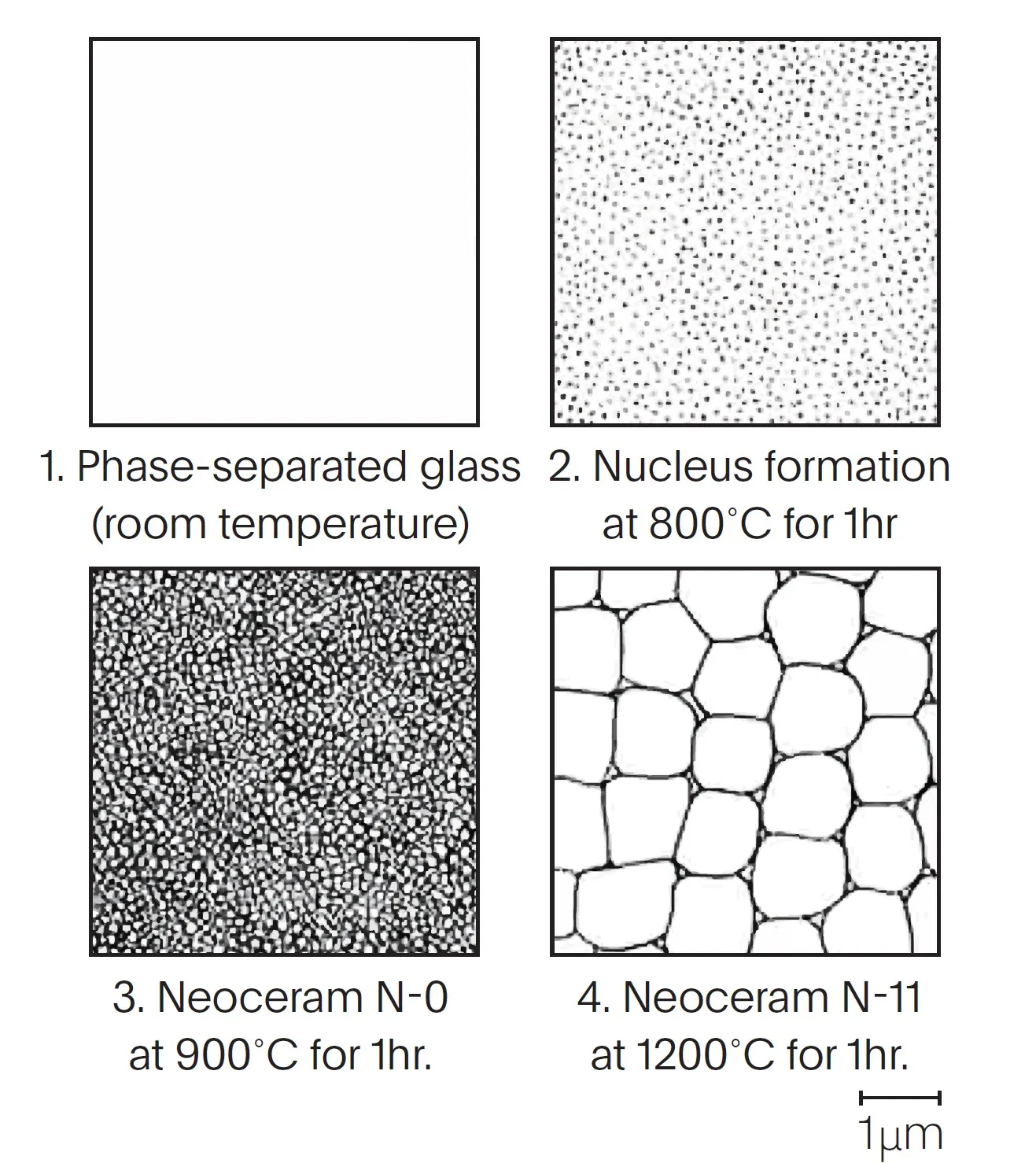
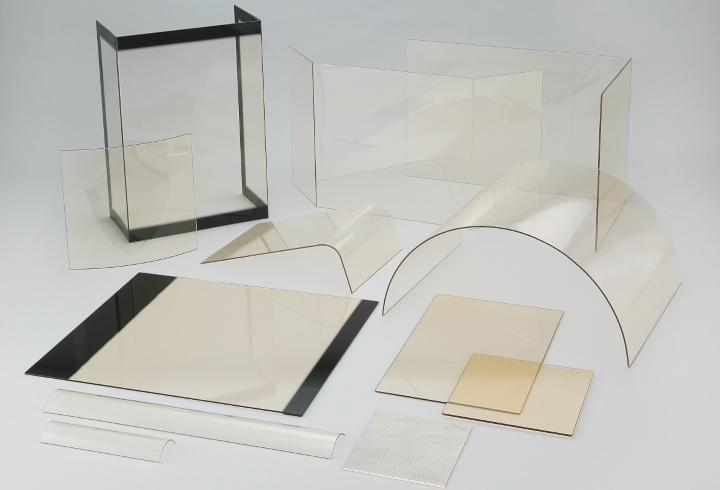
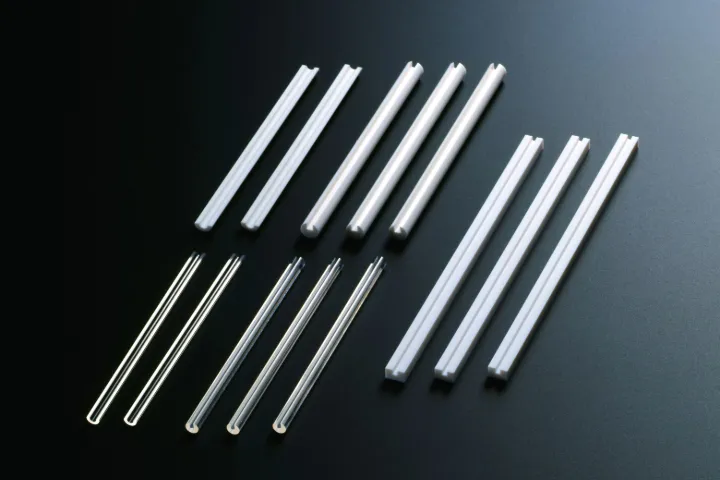
Glass with Low Thermal Expansion (Thermal Expansion Control through Crystal Precipitation)
One of the standout properties of glass-ceramics is their resistance to sudden temperature changes, or thermal shock. For example, when hot water is poured into a glass cup, the inner surface heats up and expands quickly, while the outer surface expands more slowly due to heat transfer. This creates opposing forces within the cup—one side trying to expand and the other resisting it. As a result, the glass breaks. However, glass-ceramics behave differently. Because the crystals within glass-ceramics lower the coefficients of thermal expansion of the glass, thermal expansion can be minimized. This leads to the property of far more resistant to rapid heating and cooling.
Our Super Heat-Resistant Glass-Ceramics: Neoceram, offers outstanding thermal shock resistance. It can withstand direct flame heating and even simultaneously be cooled with water without breaking. This glass-ceramic is already used in everyday items such as cookware, microwave oven turntables, trays, front windows of wood stoves and fireplaces, and heater covers for toaster ovens. Additionally, Glass-ceramics for Cooking Appliance Top Plates: StellaShine™ are widely used in induction cookers and gas stoves.
Moreover, our Fire-rated Glass: FireLite, can endure the high temperatures of a fire and won't crack when subjected to rapid cooling from sprinkler water. This ensures safety and peace of mind during a fire. Just like regular window glass, Firelite remains transparent during a fire, so it doesn't obstruct the view, allowing for clear evacuation routes. It also aids in firefighting efforts by allowing quick and accurate assessments of the conditions inside a building.
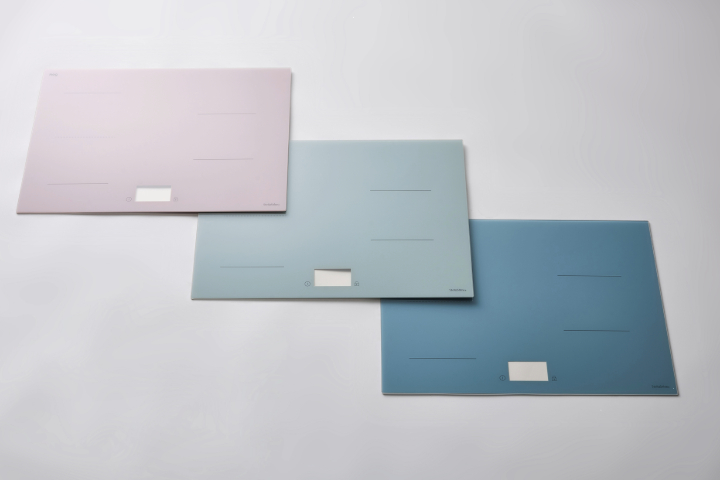
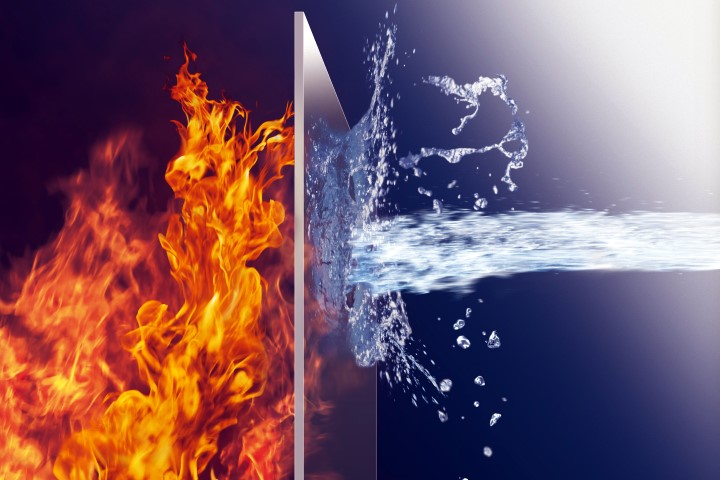
ZERØ™: Ultimate Zero Coefficient of Thermal Expansion
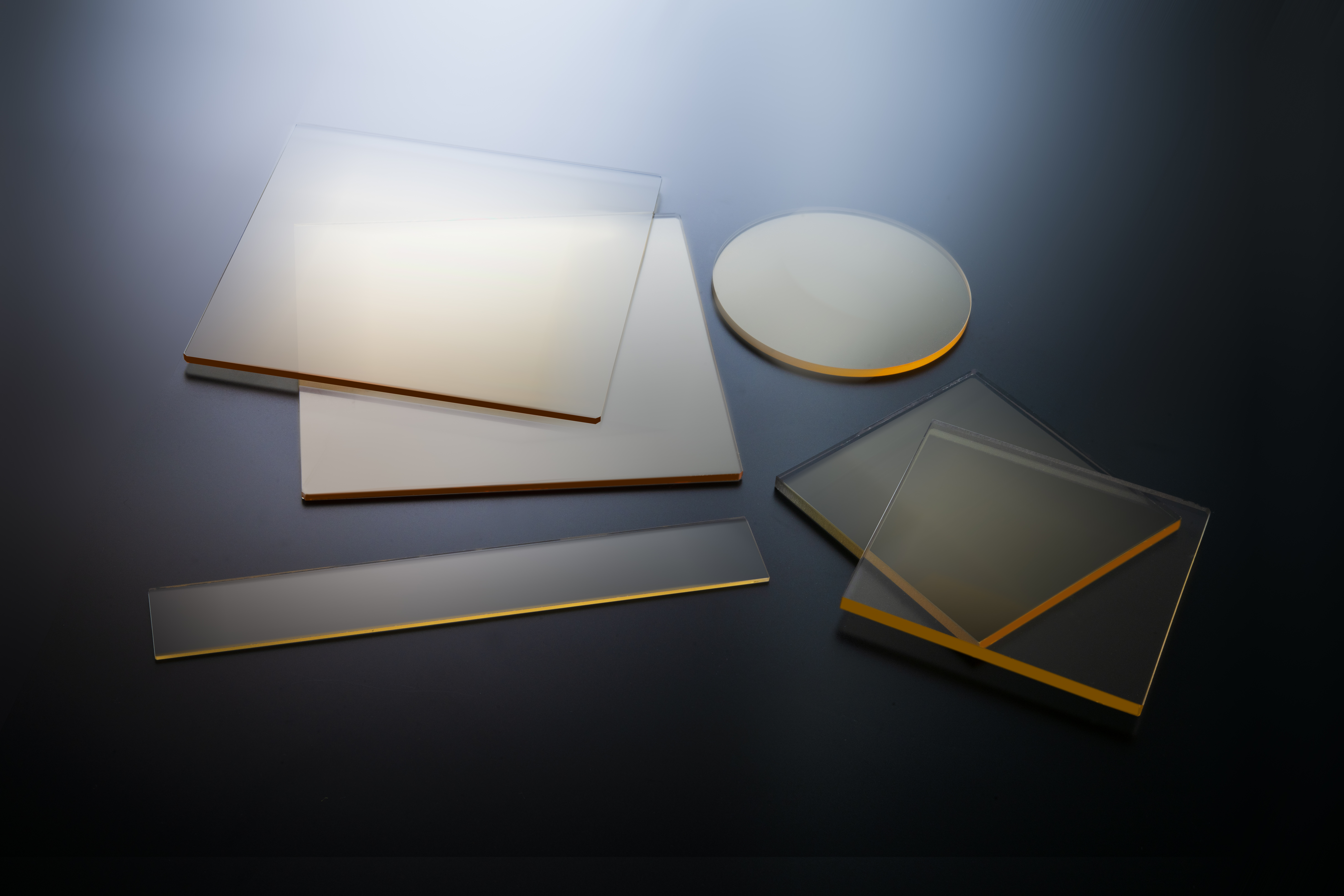
Glass-ceramics are created by heat-treating glass that originally lacks crystals, allowing fine crystals around 30nm in size to form. These crystals have the unique property of shrinking as the temperature increases, counteracting the expansion of the surrounding glass. This interaction enables precise control over the material's coefficient of thermal expansion. By optimizing the composition and crystallization process, we developed Zero CTE Glass: ZERØ™, which has a zero coefficient of thermal expansion. This innovation plays a key role in advancing technologies that require high precision, accuracy, and dimensional stability, such as optical devices, optical communication systems, liquid crystal displays manufacturing, and semiconductor manufacturing.
Negative Thermal Expansion Materials
Materials with negative coefficients of thermal expansion are often paired with materials that expand when heated, helping to suppress or compensate for their expansion. For example, Negative Thermal Expansion Ceramic Substrate: CERSAT™ is used as a packaging material for components that require temperature compensation in optical communication applications. When mixed with resin, the negative expansion filler effectively reduces thermal expansion, ensuring greater stability and performance.
